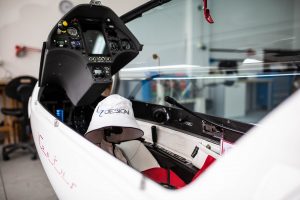ABOUT FES
Gliders with FES
WHICH NEW SAILPLANES CAN BE ORDERED WITH FES?
- Ventus-3 Sport FES, FAI 15-18m class, latest generation of Ventus, EASA certified.
- Duo Discus FES, 20m double seater.
DG Aviation, Germany – high performance sailplanes
- DG1001-e neo, first double seater sailplane with FES system, EASA certified.
SAirKo, Lithuania – high performance sailplanes
- LAK17C FES, self-launching FAI 15m & 18m class sailplane, EASA certified.
- MiniLAK FES, light self-launching FAI 13,5m class sailplane, EASA certified.
- LAK17B FES, FAI 15m & 18m class sustainer sailplane, EASA certified.
HPH Sailplanes, Czech Republic – high performance sailplanes
- HpH Shark eS, FAI 18m class sustainer sailplane, with strong safety cockpit and many other features, EASA certified.
Avionic, Poland – producer of famous Diana 2 FES
- Diana 2 FES, FAI 15m class racing sailplane.
Albastar, Slovenia – producer of UL self-launching sailplanes
- AS15m FES, light 15m recreational sailplane. Contact us for more info about this glider type.
FAQ
EASA gliders
Yes, next glider manufacturers offers FES as retrofit option for next EASA certified FES sailplane types:
- DG Flugzeugbau offers FES retrofit for some serial numbers of LS8 as published on this link.
- Schempp-Hirth offers FES retrofit for all Discus-2c variants (D-2c, D-2c(T), D-2cT), Ventus-2cxa and all Duo Discus with 750kg MTOW. And the Engineers of the “SH Lab” will come very likely with more variants in next future. More info about SH retrofit solutions on this link.
- SAirKO offers FES retrofit for LAK17A, LAK17AT and LAK17A Mini. Also LAK19 could be retrofited for US market.
Non EASA gliders
LZ design can offer FES retrofit for many different types of used, non-EASA sailplanes.
In Europe they are so called Annex I types, with National Permit to Fly. This is EU version of national registration as well known “Experimental registration” in USA.
Annex I types are by definition, not EASA aircrafts and are therefore handled by each EASA member state national authorities according to their national rules.
Most of the newer sailplanes which were designed to fly with some kind of engine, can be retrofited with FES.
So far more that 30 different types of gliders were FES equipped. If you are interested sent us inquiry about specific type, with information about requested country of registration and recent W&B document.
- MAXIMUM WEIGHT
The most important is the maximum weight of the non lifting parts (everything including pilot, except the wings). There must be enough reserve for additional 45kg of weight in the fuselage. If this requirement is not met, than it is not possible to install FES – due to safety reasons.
- NOSE SECTION
Nose section should be as round as possible, slightly elliptic or eggy shape is also acceptable. We usually design a special spinner or adjust the front part of fuselage to be appropriate for FES installation.
EASA REGULATION (European countries)
Airworthiness and certification can be done in different ways, depending on the “type” of sailplane:
- EASA used sailplane,
- EASA new sailplane,
- Annex I type sailplane (non EASA type of sailplane).
Certified EASA sailplanes require valid Certificate of Airworthiness (CofA).
If the sailplane is modified, CofA is not valid anymore.The following options are possible to make the saiplane airworthy again:
- Initially EASA Permit to fly (PtF) can be arranged based on EASA Approval of flight conditions. One of the conditions for EASA to issue an Approval of flight conditions for EASA PTF – Permit to Fly is that the application for TC – type certification is applied to EASA.
Please check “EASA Fees and Charges” for basic understanding of costs associated with EASA certification.
USED SAILPLANES
NEW SAILPLANES
ULTRA LIGHT, EXPERIMENTAL, HOME-BUILT SAILPLANES
The main factors influencing the total cost of FES installation, are:
- single / double seater sailplane,
- used as a pure sailplane / used, but prepared for FES installation in advance,
- possible specific features of each sailplane type,
- possible special local regulations and conditions,
- required type of certification: EASA, Annex I type etc.
The manufacturers of the new aircrafts with built-in FES system, determine the final price of FES system themselves!

